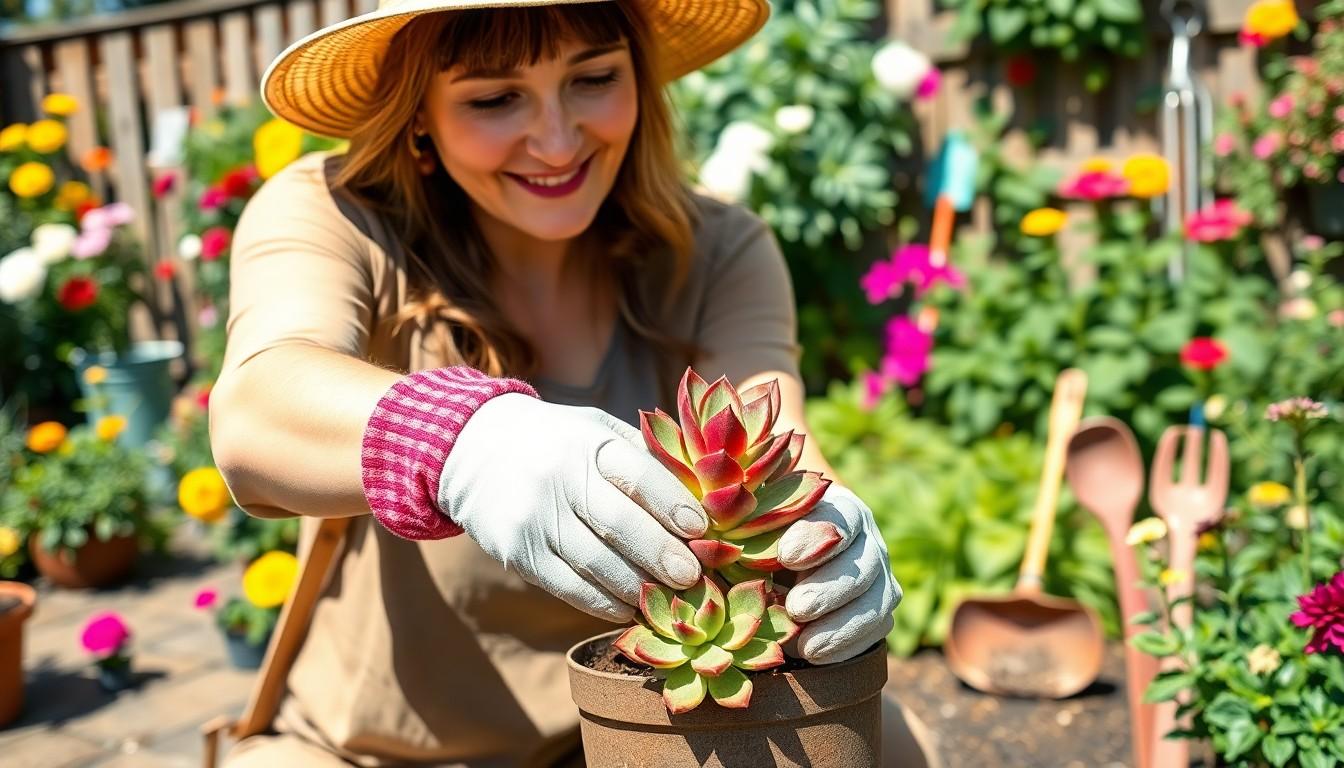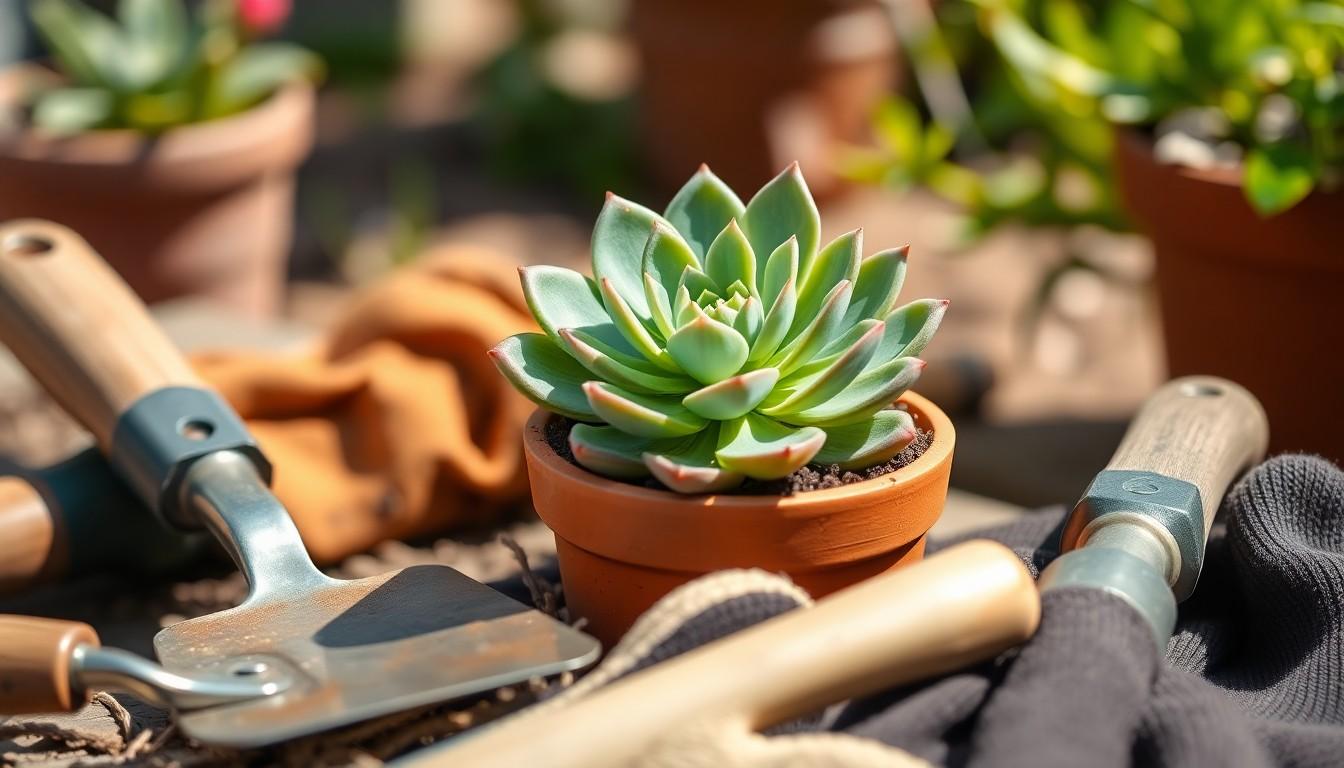Physical Address
304 North Cardinal St.
Dorchester Center, MA 02124

Transplanting succulents might sound like a botanical game of musical chairs, but it’s actually a crucial step in keeping those plump little plants thriving. Whether they’re outgrowing their cozy pots or just need a change of scenery, knowing when and how to transplant can turn a struggling succulent into a superstar. After all, nobody wants a sad little cactus sulking in a too-small pot, right?
Transplanting succulents significantly enhances their overall health and vitality. This process offers several advantages that lead to thriving plants.
Transplanting encourages improved growth in succulents. Plants that have become root-bound often experience stunted development. By providing a larger pot, roots gain space to expand, which promotes better nutrient absorption. Fresh soil also introduces essential nutrients, fostering robust growth. A succulent thriving in a suitable environment can achieve its full potential, showcasing vibrant colors and healthy leaves. Thus, timely reinvention of its living conditions ensures that the succulent flourishes rather than remains restricted.
Better drainage results from strategic transplanting. Succulents require well-draining soil to prevent root rot and over-saturation. By selecting the right soil mix during transplantation, water flows away swiftly, allowing roots to breathe. Proper drainage also protects against fungal diseases that thrive in overly moist conditions. Success using a pot with drainage holes ensures excess water escapes, further promoting a healthy environment. Each of these factors contributes to a succulent’s longevity and resilience, ultimately leading to a flourishing plant.

Identifying the right time to transplant succulents ensures they maintain optimal growth. Several factors contribute to this timing, including seasonal conditions and specific indicators.
Spring serves as the ideal season for transplanting succulents. Warmer temperatures and longer daylight hours promote growth and healing. Additionally, during late spring, the risk of frost diminishes, making it safe to move plants outdoors. It’s important to avoid transplanting in winter, as succulents enter dormancy and may struggle to establish in colder conditions. Early summer can also be suitable, provided the plants receive adequate care post-transplant.
Multiple signs suggest succulents require transplanting. The presence of visible roots through drainage holes indicates that the pot may be too small. When leaves become discolored, particularly yellow or brown, poor soil conditions or root stress is often to blame. A lack of growth signals that a new potting mix or space is necessary for potential expansion. Monitoring these signs helps ensure healthy and vibrant succulents thrive in suitable environments.
Transplanting succulents requires careful preparation and methodical execution to ensure their successful growth in a new environment.
Choose a pot that’s at least one to two inches wider than the previous one. Ensure it has drainage holes to prevent excess water accumulation. Select a potting mix tailored for succulents, which typically includes sand, perlite, or pumice for enhanced drainage. Line the bottom of the pot with small stones or gravel to further improve drainage. To provide a clean start, thoroughly clean the new pot with warm, soapy water before use.
Start by gently removing the succulent from its current pot, taking care not to damage the roots. Remove any old soil clinging to the roots for better expansion in the new pot. Place a layer of potting mix in the bottom of the new pot, creating a small mound in the center. Position the succulent atop this mound and spread the roots outward. Fill the pot with soil around the roots, ensuring the plant rests at the same depth as in the previous pot. Finally, water the succulent lightly to help settle the soil around the roots and eliminate air pockets.
Being aware of common mistakes helps ensure successful transplanting. Avoiding pitfalls can result in healthier succulents.
Overwatering presents a significant threat to transplanted succulents. Watering too soon after transplanting often leads to root rot. It’s essential to check the soil moisture before watering; it should feel dry one inch below the surface. Allowing the succulent to acclimate is critical, with no watering needed for several days post-transplant. Gradually reintroducing water allows the roots to settle without drowning. Monitoring drainage helps prevent excess moisture from remaining in the pot.
Choosing the wrong soil can hinder succulent growth. A potting mix lacking adequate drainage increases the risk of rot and disease. Using a specialized succulent or cactus mix ensures the right balance of drainage and aeration. Organic materials like coarse sand or perlite promote healthy root systems. Not all potting soils maintain the same moisture levels; using one formulated for succulents optimizes results. Inspecting soil texture and composition prior to transplanting guarantees a suitable environment for thriving plants.
Transplanting succulents is a vital step in nurturing these resilient plants. By recognizing the signs that indicate a need for a new pot and following the proper techniques, gardeners can significantly enhance their succulents’ health and vitality. With the right timing and care, the transition becomes a smooth process that allows plants to thrive in their new environment.
Avoiding common pitfalls like overwatering and choosing the appropriate soil mix will further ensure success. By committing to these best practices, anyone can enjoy vibrant and flourishing succulents that bring beauty to their space. Embracing the art of transplanting not only supports the plants but also enriches the gardening experience.